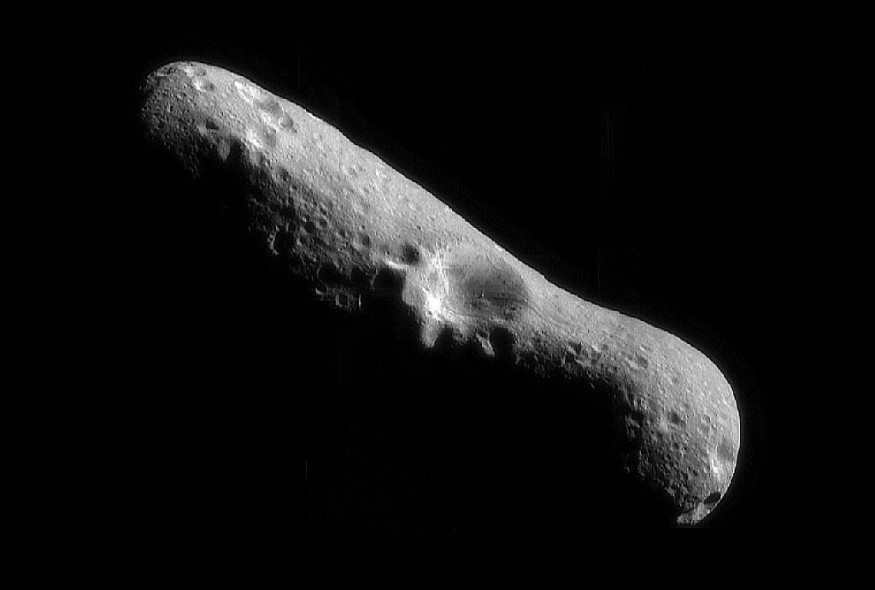The incinerated remains of a long-dead comet, according to research, might have addressed questions surrounding the origins of the spinning top-shaped asteroid Ryugu.
The satellite mission Hayabusa2 returned samples and photographs from the space rock Asteroid 162173 or Ryugu in 2020, which NASA's Center for Near-Earth Object Studies designated as a potentially hazardous asteroid (PHA). The asteroid's spinning top form, the knowledge that it is a loose pile of gravitationally linked rubble, and the fact that it is rich in organic stuff were all disclosed by this data.
Researchers have tried to explain these properties using a single-origin explanation since then. Ryugu is thought to have come from the debris left behind by the collision of two bigger asteroids, according to Newsweek. This proposal, however, falls short of explaining why the asteroid has such a high organic composition.
Experts presented the paper, "Soluble Organic Compounds in Asteroid 162173 Ryugu," at the Lunar and Planetary Science Conference of 2022.

Collecting Asteroid Ryugu Samples With Hayabusa 2
Japan's Hayabusa 2 mission acquired the samples in 2018 and 2019, Space.com reported. The findings include a breakdown of the asteroid's composition. Furthermore, the results revealed that asteroids like Ryugu may have aided in spreading life on Earth.
The Hayabusa 2 mission of Japan retrieved stony fragments from the surface of Ryuga in 2018. In 2019, the spacecraft returned to the asteroid and created a tiny crater to gather particles from under its surface.
The scientists claim to have uncovered crucial amino acids in these samples. These amino acids are contained in the seeds of life that can be found all across the cosmos.
BGR said Ryugu appears to have more of these seeds than any other discovered asteroid similar to it. Researchers found these additional asteroids after they fell on Earth, which aided scientists in making the links between the two.
These asteroids are classified as CI chondrite asteroids by scientists.
Is this what a dead comet looks like? A new study suggests the asteroid Ryugu is the remains of an ancient comet that burned out & lost its ice. https://t.co/9WNNuFYsgB pic.twitter.com/WTmUM1eu38
— Corey S. Powell (@coreyspowell) March 23, 2022
ALSO READ : Watch 'Monster Planet Killer' Asteroid Making Its Close Approach to Earth; Here's When And How To View It
Hiroshi Naraoka and a team of experts investigating the samples discovered that the samples from Ryugu had larger quantities of carbon, hydrogen, and nitrogen than those from other asteroids.
They also observed that Ryugu samples were more "primitive" than those from other CI chondrite asteroids.
Asteroid Ryugu a Remnant of an Extinct Comet?
The presence of biological stuff casts doubt on the popular belief that the collision of two bigger asteroids formed Ryugu.
Organic matter, which is made up of carbon-hydrogen bonds and is necessary for life, is seldom found on asteroids, but it is abundant inside comets.
Comets arise in the solar system's outer, coldest regions when clouds of biological debris combine with rocks and ice to produce these filthy snowballs.
New comets drift into the inner solar system as the sun's heat eventually melts them (bordered by the asteroid belt between Mars and Jupiter). The ice escapes the comet in a trail that resembles a lengthy tail due to this melting.
Ryugu is a residue of gravity-compacted rocks and organic stuff left behind after the ice was vaporized due to this melting process.
According to study lead author Hitoshi Miura, an associate professor of material science at Nagoya City University in Japan, this melting process may have caused "The comet's nucleus loses mass and shrinks, increasing its rotational speed.
Miura said in a statement that its fast-spinning may have provided the dead comet's core with the rotational speed essential for creating a spinning-top shape.
RELATED ARTICLE : NASA Telescope Finds Asteroid Collision Around Star HD 166191
Check out more news and information on Space in Science Times.
© 2025 ScienceTimes.com All rights reserved. Do not reproduce without permission. The window to the world of Science Times.












